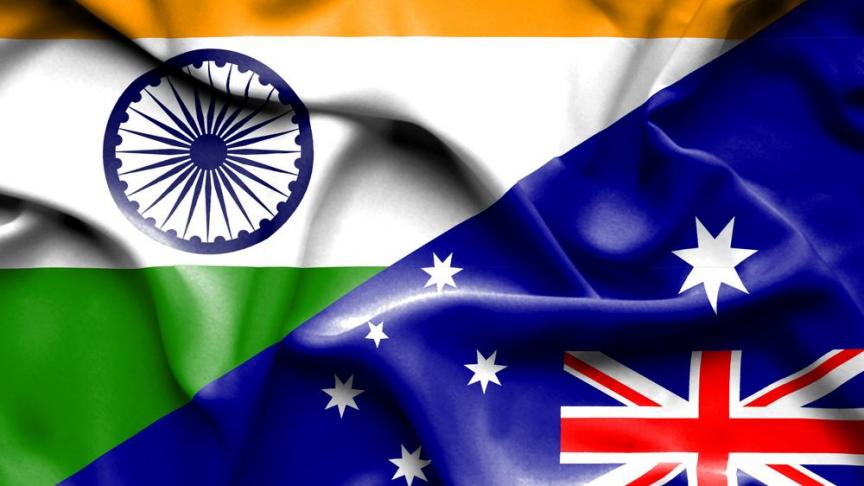By Melissa Conley Tyler, University of Melbourne
Negotiations on the Australia–India Comprehensive Economic Cooperation Agreement (CECA) are set to restart after being suspended in 2015. Australia’s new Minister for Trade Dan Tehan has flagged that a trade deal with India will be one of his top priorities.
Why were the original negotiations abandoned? And has anything changed to make a deal more likely now?
There are potential gains for both countries. The original joint feasibility study found significant tariff and non-tariff barriers to goods and services trade. It assessed the potential welfare gains of an agreement as between 0.15–1.1 per cent of GDP for India and 0.23–1.17 per cent of GDP for Australia.
Australia’s India Economic Strategy identifies 10 priority areas to grow trade with India: a flagship sector (education), three lead sectors (agribusiness, resources and tourism) and six promising sectors (energy, health, financial services, infrastructure, sport and science). India’s recently-released Australia Economic Strategy identifies significant room for growth in exports and investment in 12 focus sectors and eight emerging sectors.

Top 10 country of origin, international students in Australia 2019. Graphic- DFAT
But after nine rounds between 2011–2015 covering many proposed chapters, negotiations were suspended.
For India, Australia’s agricultural exports were a sticking point. With half of India’s employment tied to agriculture, anything that threatens producers is political dynamite. Australia’s argument that many of its agriculture exports are aimed at the premium end of the market and would not displace the production of India’s smallholder farmers fell on deaf ears. Similar dynamics are at play in other sectors where India’s largest corporations feel threatened by the prospect of increased market competition and will lobby hard to defend their privileged status. Proposed trade agreements are generally judged by the benefits to domestic producers, not to consumers.
India’s suspicion toward trade has deep roots, stretching back to the United Kingdom’s colonial theft of India’s wealth, which was (wrongly) justified as ‘free trade’. Trade is often framed in terms of winning or losing, so India’s trade deficit of around AU$15 billion (US$12 billion) means that trade is seen as heavily skewed in Australia’s favour, with different levels of development preventing a level playing field. Trade agreements with ASEAN, South Korea and Japan have worsened India’s trade deficit.
For Australia, one of the most politically-sensitive sticking points was India’s desire for a more relaxed visa regime for Indian workers. Other reported concerns include threats from parasites on imported mangoes and the impact on steel and food processing. Overall, the sense was that India wasn’t offering enough to make a deal worthwhile. The diplomatic description in 2018 was that ‘negotiating positions are too far apart to make the conclusion of a CECA a realistic objective in the near term’.
After talks were suspended, Australia focussed on keeping India in negotiations for the multi-country Regional Comprehensive Economic Partnership (RCEP) as a way to achieve a trade pact, with CECA to follow.
What’s different today?
The biggest change is in the wider context of the Australia–India relationship. Motivated partly by concerns about China, India and Australia elevated their relationship to a Comprehensive Strategic Partnership at the Leaders’ Virtual Summit in June 2020.
While India may want to prise Australia away from what it would see as an unhealthy dependence on China, it’s unlikely to make trade concessions for wider security benefits. India’s room for movement given domestic politics is narrow, as recent farm demonstrations show, and it’s unlikely to spend political capital on an agreement seen as anything other than highly advantageous to Indian industry.
The fact that India is also looking at reviving trade talks with the United States and with the European Union, suspended in 2013, suggests there may be some change in its orientation on trade. Reforms to reduce red tape have improved its ease of doing business ranking and it has introduced policies that seek to encourage foreign investment.
But India’s decision to pull out of RCEP suggests that concerns remain about trade deficits and unemployment, with industry and traders’ bodies playing a blocking role. While there are voices arguing for a different approach to trade agreements, this remains a minority view. Only 5–25 per cent of India’s international trade is covered by agreements compared to 70 per cent for Australia.
On the Australian side, the government is under pressure to promote diversification of exports markets because of China’s restrictions on exports worth at least AU$20 billion (US$15.4 billion). Of the agreements under negotiation, the Australia–EU Free Trade Agreement is the only one close to the conclusion after nine rounds. Negotiations for a UK–Australia agreement have just begun, while Israel, Switzerland, and others are at the feasibility study stage.
With both governments wanting to show that they are doing something for economies that are hurting badly, even just restarting negotiations might have political benefit. There may be no rush to put in the hard yards to reach an agreement, with no talks yet taking place despite being announced in June.
What’s on the negotiating table might not be much better than in 2015, but both Australia and India might be more willing to accept it. The most attractive option might be a relatively slim agreement of mainly symbolic value, though this would pain Australia’s trade negotiators. Those who want to nurture the economic relationship might look for other avenues beyond a formal agreement.
Melissa Conley Tyler is a Research Fellow at the Asia Institute, University of Melbourne.
Source- eastasiaforum.org, 25 January 2021
(Published under Creative Commons Licence)






